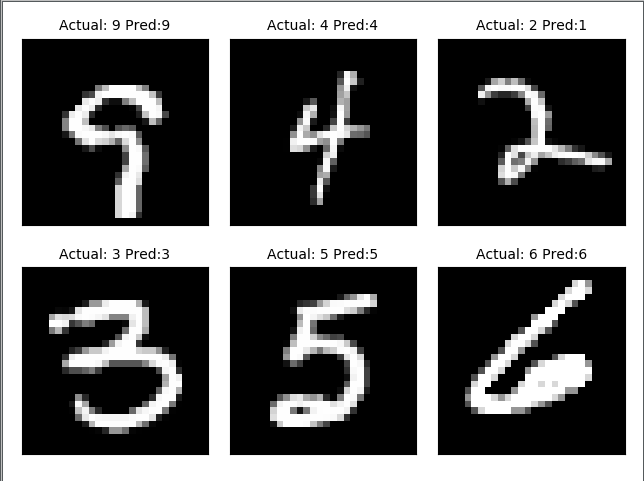import tensorflow as tf import numpy as np import matplotlib.pyplot as plt from sklearn import datasets import random from PIL import Image from tensorflow.examples.tutorials.mnist import input_data sess=tf.Session() mnist= input_data.read_data_sets("MNIST_data/",one_hot=True) #本例包含10个类别 train_size=1000 test_size=102 rand_train_indices=np.random.choice(len(mnist.train.images),train_size,replace=False) rand_test_indices=np.random.choice(len(mnist.train.images),test_size,replace=False) x_vals_train=mnist.train.images[rand_train_indices] x_vals_test=mnist.train.images[rand_test_indices] y_vals_train=mnist.train.labels[rand_train_indices] y_vals_test=mnist.train.labels[rand_test_indices] k=4 batch_size=6 x_data_train=tf.placeholder(shape=[None,784],dtype=tf.float32) x_data_test=tf.placeholder(shape=[None,784],dtype=tf.float32) y_target_train=tf.placeholder(shape=[None,10],dtype=tf.float32) y_target_test=tf.placeholder(shape=[None,10],dtype=tf.float32) #L1距离 shape=(6, 1000) sub.shape=(1000,784) - (6,1,10)=(6,1000,784) distance=tf.reduce_sum(tf.abs(tf.subtract(x_data_train,tf.expand_dims(x_data_test,1))),reduction_indices=2) #top K (6, 4) top_k_xvals,top_k_indices=tf.nn.top_k(tf.negative(distance),k=k) #(6, 4, 10) = gather((1000,10),(6,4) ) prediction_indices=tf.gather(y_target_train,top_k_indices) #shape=(6, 10) count_of_prediction=tf.reduce_sum(prediction_indices,reduction_indices=1) #预测模型 shape=(6,) prediction=tf.arg_max(count_of_prediction,dimension=1) num_loop=int(np.ceil(len(x_vals_test)/batch_size)) test_output=[] actual_vals=[] for i in range(num_loop): min_index=i*batch_size max_index=min((i+1)*batch_size,len(x_vals_test)) #获取数据 x_batch=x_vals_test[min_index:max_index] y_batch = y_vals_test[min_index:max_index] predictions=sess.run(prediction,feed_dict={x_data_test:x_batch,x_data_train:x_vals_train,y_target_test:y_batch,y_target_train:y_vals_train}) test_output.extend(predictions) actual_vals.extend(np.argmax(y_batch,axis=1)) #精确度预测 accuracy=sum( 1./test_size for i in range(test_size) if test_output[i]==actual_vals[i]) print("Accuarcy: "+str(accuracy)) actuals=np.argmax(y_batch,axis=1) for i in range(len(actuals)): plt.subplot(2,3,i+1) plt.imshow(np.reshape(x_batch[i],[28,28]),cmap="Greys_r") plt.title('Actual: '+str(actuals[i])+' Pred:'+str(predictions[i]),fontsize=10) frame=plt.gca() frame.axes.get_xaxis().set_visible(False) frame.axes.get_yaxis().set_visible(False) plt.show()
